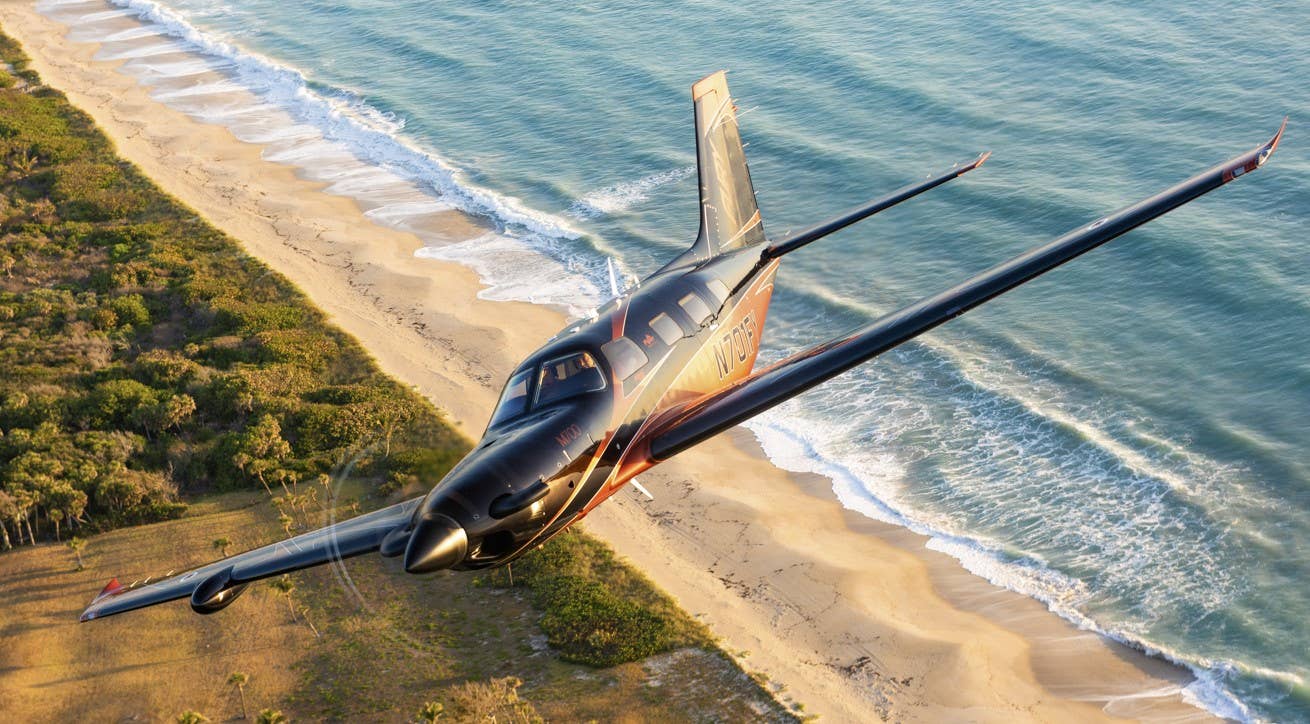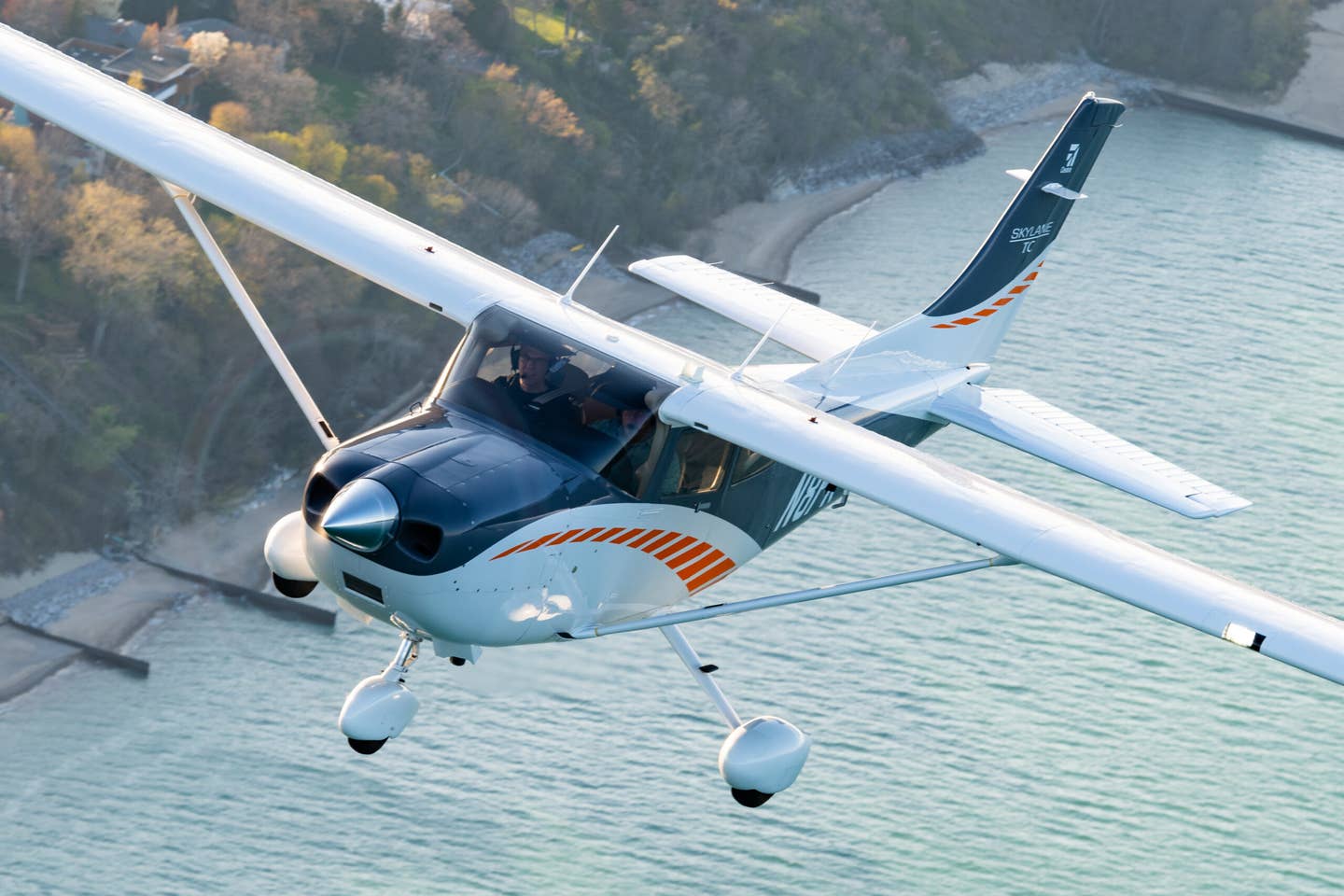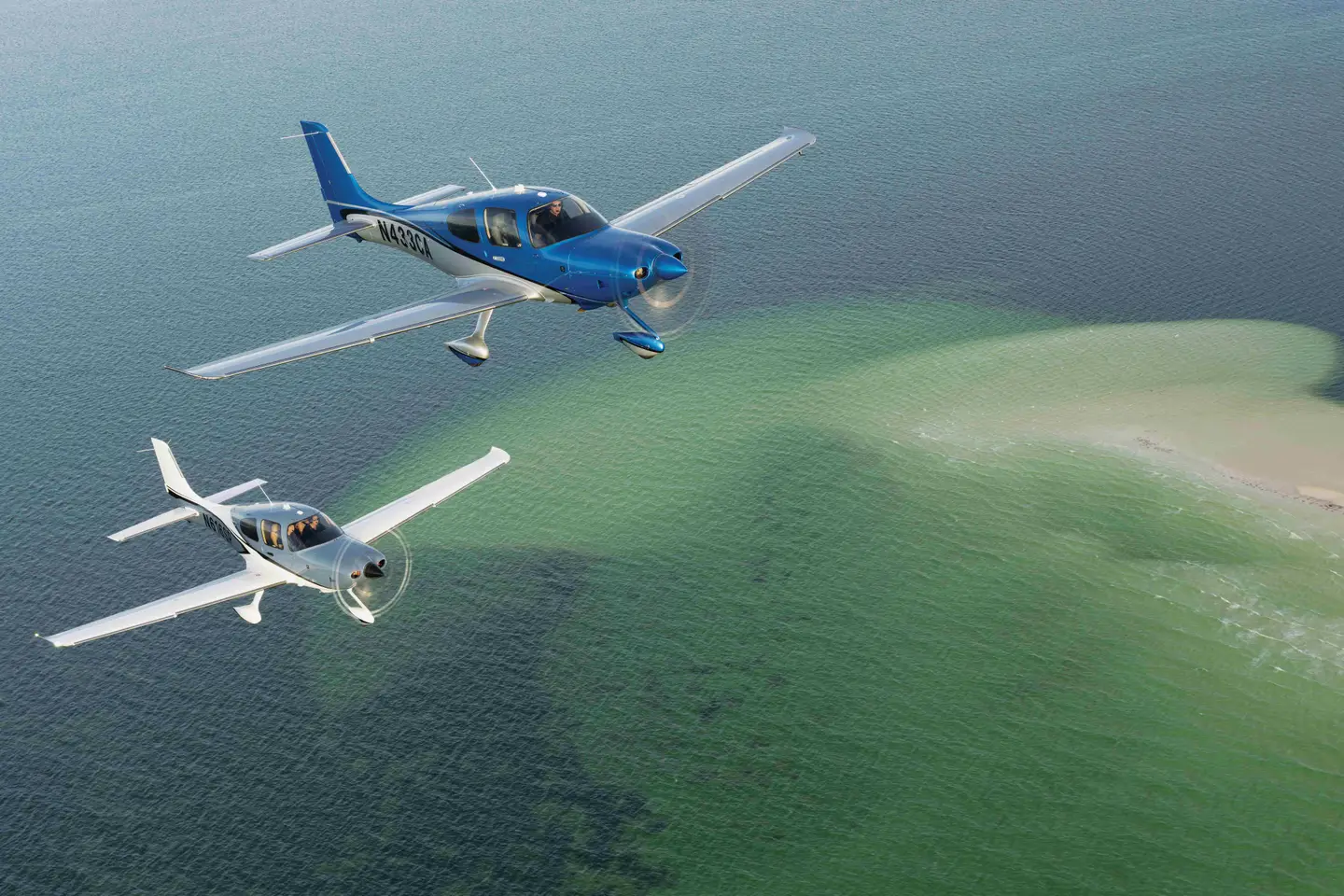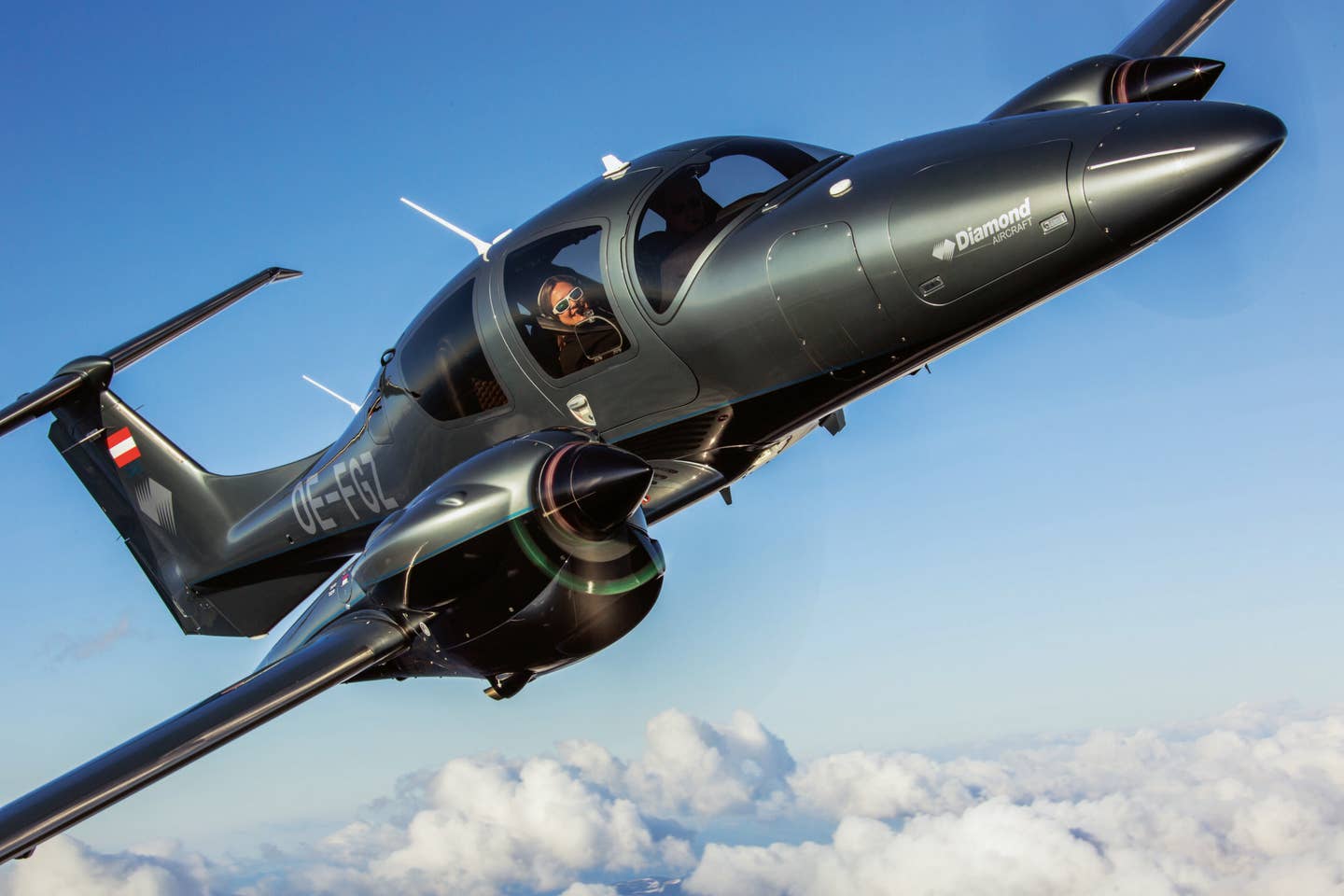Embraer’s Phenom 300E Full of Bossa Nova Style
The Brazilian OEM celebrated its golden anniversary in 2020 by giving its popular business jet some impressive enhancements.
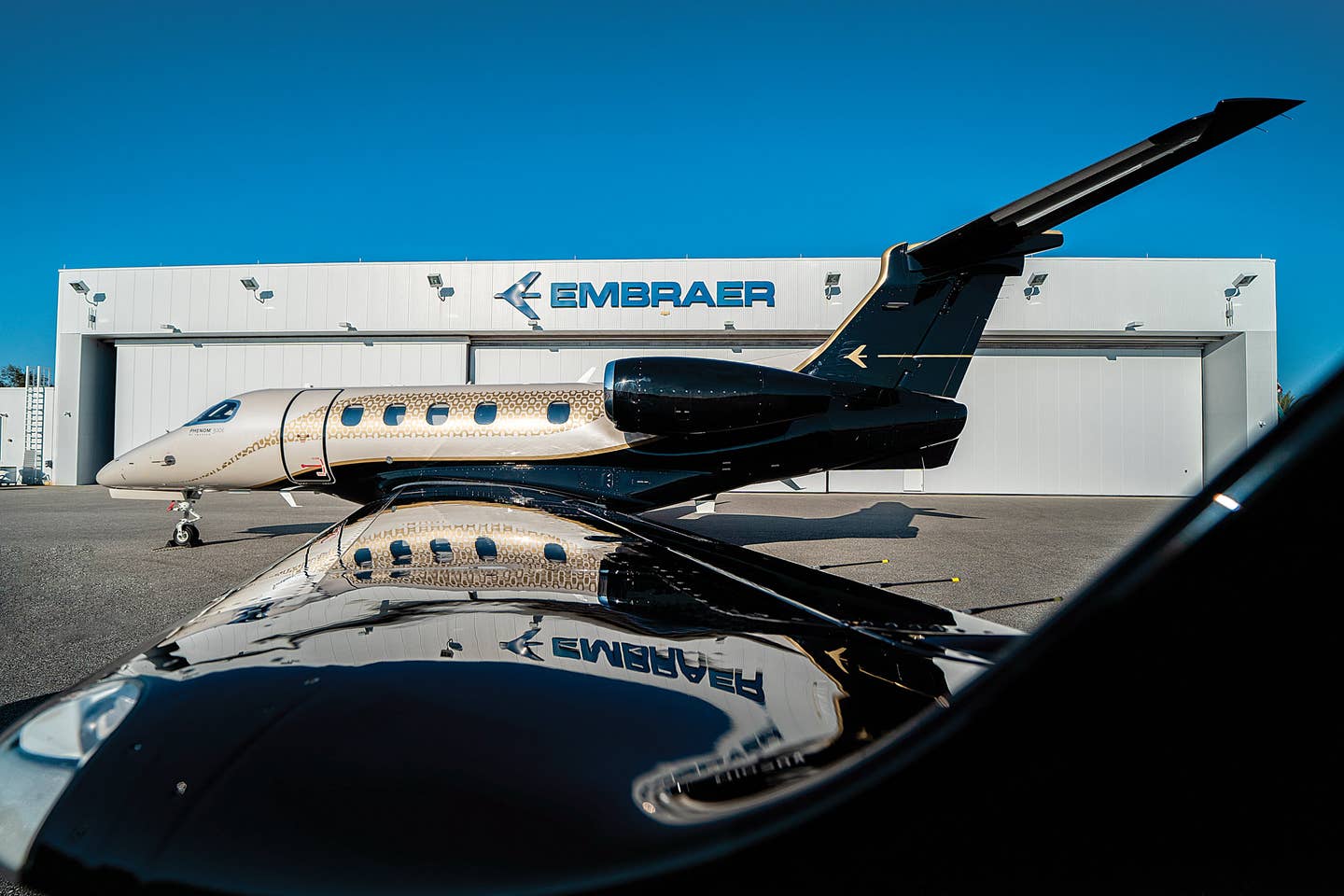
The updated 300E gained triple type certification from the FAA, EASA and Brazil’s ANAC in late March 2020. [Courtesy: Embraer]
On the outside, Embraer may look like just another bottom-line-driven international aircraft manufacturer—and the recent headlines covering its courtship breakup with Boeing regarding the joint venture involving its commercial aircraft division only seem to add to this image.
But when you pull back the layers, at the heart of the company stands a person who worked hard to build it from his dreams of designing aircraft. In the Portuguese-speaking world, the title “Engenheiro,” or engineer, is one of respect conferred in a similar manner to that of a doctor—and from the very beginning, Engenheiro Ozires Silva wanted more than anything to be an aeronautical engineer.
Embraer Phenom 300E at a Glance
Silva fed his dream as a young boy by crafting airplane models in the suburbs of São Paulo, Brazil, where he grew up in the 1930s. He had to translate his desire to build a wholly Brazilian aircraft into piloting for the military for a decade because there was no way to pursue an aeronautical engineering degree in the country until the 1950s. Once he found a way, his path led to the foundation of Embraer, 50 years ago, in 1970.
These dreams—and the transformation of them into action—show up in many facets of the current company and its aircraft. I had a taste during my visit to Embraer Executive Jets in Melbourne, Florida, in early March, to fly the company’s latest waking dream, the updated Phenom 300E.
From the outside, the 300E shows off its latest cosmetic upgrades in a sleek new paint scheme and enticing interior. But as the team took me through the detailed briefing prior to our flight, the jet impressed me in a number of other ways—almost enough to compel me to break out into a little jazz turn on the ramp. OK, not quite, but there’s more to the updated certification than what catches the eye.
Performance Upgrade (We Mean Speed)
Alvadi Serpa, Embraer Executive Jets' director of product strategy, laid the cards on the table (figuratively): A little competition (OK, a lot) from the Phenom 300′s category rivals, such as the Cessna Citation CJ4, spurred them on to go faster and further, both on paper and in performance, pursuing a new type certification—under EASA, FAA and Brazil’s ANAC—that came through in late March.
Simply stated, the new 300E has achieved a maximum Mach operational speed (MMO) of M0.80—at FL 330, that translates to 464 ktas, based on a basic operating weight of one pilot plus four passengers plus 50 percent maximum usable fuel weight. That beats the previous 300E’s MMO of M0.78, or 453 ktas, under similar conditions—and puts it in range of the CJ4.
Thiago Bernini, Embraer Executive Jets' senior product strategy engineer, walked me through the genesis of that upgrade, beginning with the source: more-powerful engines. The new Pratt & Whitney 535E1 engines produce an extra 118 pound-force (lbf) of thrust over the previous PW535 engines—a total 3,478 lbf of thrust—with no increase to the operating costs, according to Embraer.
Plus, range now tops the magical 2,000 nm number—2,010 nm, to compete with the CJ4′s range at 2,165 nm. That’s with five occupants, and NBAA IFR reserves with a 100 nm alternate, long-range cruise power configuration, ISA temperatures at sea level, and weighing in at maximum takeoff weight.
Put six people on board, and you can still see 1,865 nm at high-speed cruise and 1,990 nm at long-range cruise. You can reach Denver, Colorado, or Guayaquil, Ecuador, from Fort Lauderdale, Florida, that way—at high-speed cruise, with five 200-pound occupants and NBAA IFR reserves.
Pilot Assist
Enhancements abound up front on the flight deck, with some of the most important updates hiding in small details. For example, Eric Le Blanc, flight test engineer, explained how the new processors in the G3000 will ease pilots' frustration from the moment they start throwing switches. “[The new system features] a solid-state hard drive on each component, which allows them to boot quicker, so it takes a lot less time for the airplane to power up.”
Expanded checklists—powered by this new processing power, and accessed through the Garmin touchpads—make procedures run more smoothly, especially when conducted by a two-pilot crew, because the more-detailed checklist steps can be ticked off right on the display and picked up instantly by the other pilot, with the ability to follow hyperlinks to additional checklists.
A graphical weight-and-balance system eases pilot workload—especially when last-minute changes take place. “If you went to an airport to pick up a customer, and they were supposed to come with two people, and they show up with three or four people, you can quickly update your weight and balance, and see if you can make the trip or not,” Le Blanc says. With the visual presentation already made, the pilot can easily point to the graph to back up their determination. Takeoff and landing data residing in the G3000 keep you from having to whip out the quick-reference handbook for those numbers prior to pulling the chocks.
More workload-reducing features include the ability to import FMS speeds directly into the autopilot rather than relying upon manual input. When in FMS mode, the system automatically populates the speed when the pilot enables flight level change on the autopilot.
A Garmin TCAS system replaces the prior traffic alerting system—and many of the physical controls all around have been moved into the Garmin GTC controller. The 300E now features ADS-B In, which gives the pilot traffic in flight and on the ground, and is generated through the TCAS box, not the transponder.
The flight deck also includes an enhanced HSI, allowing the pilot to overlay a map on the display. The FIS-B traffic data and info block are also visible so you can verify your aircraft registration data is correct. Both Garmin FliteCharts and Jeppesen charts can be accessed—and FliteCharts are now geo-referenced on the display. Data Comm Tower Service—automated ATC datalink communication available at certain airports—is preloaded so that wherever it has been adopted, it’s already in there, ready to go.
Two more additions go beyond the nice-to-have and into the safety realm: the option for a coupled go-around—with the pilot still responsible for flaps and gear—and emergency descent mode (EDM). To initiate the EDM, the autopilot must be engaged and the jet must be flying above FL 250. If the cabin altitude EICAS message is illuminated (for example, if it reaches 10,000 feet), it will trigger the system, which waits five seconds before initializing a rapid descent.
The EDM targets a top speed of 250 knots in the descent to a preselected altitude of 15,000 feet utilizing flight-level-change mode, with a turn 90 degrees from the airplane’s current track on heading mode. The 300E doesn’t have autothrottles, so the pilot must pull the throttles back to increase the descent rate once 250 knots is reached—so that descent may be shallower than optimal until the pilot commands reduced power and speed brakes. The idea is to begin the jet’s progress to a safe altitude and hope that the pilot wakes up to the situation at hand.
Optimized for the Mission
When I climbed on board and into the left seat, other details from the briefing made sense. Case in point: the 40 percent increase in pilot and copilot seat tracks—the better legroom should please pilots who have suffered a bit in the previously more cramped quarters. I’m about a foot shy of the target benchmark of 6 feet, 4 inches, but I did feel comfortable in the seat, and I could easily adjust it to suit my preferences for sight picture and proximity to the flight controls and touchpads.
So, how did Embraer’s engineers get here? It was a combination of improvements behind the scenes—well, aft of the cockpit. They reconfigured the racks for manuals, the fire extinguisher, protective breathing equipment and crash ax, and relocated the water barrier (required in the event of water landings, and the placement of which differs for Brazilian ANAC and FAA certification versus EASA certification).
Several redesigns in the cabin reduce noise: those of the thermal acoustic installation package, the noise barrier, and three check valves—specifically, to get rid of an irritating flapper noise often experienced during descent and final approach phases of flight—plus the addition of a muffler to the vapor cycle machine.
We’d briefed the flight before our walk-around, so I proceeded with a flow around the cockpit, followed by the checklist—a little sprinkle of rain tapped on the windshield as I familiarized myself with the lay of the land. Demo pilots Sebastian Arrazola and Chris Rogers had given me a heads-up about taxiing, that the way forward as a new Phenom pilot would probably result in some fits and starts until I got the feel for the ground handling. Nevertheless, we made it out slowly to Runway 9L at Melbourne and took off in 2,960 feet with a V1 of 104 knots, VR of 105 and V2 of 116 knots—at a takeoff weight of 16,482 pounds.
After the first segment climb speed of 131 knots, we cruise-climbed up to an intermediate altitude for ATC. Just as we got there, the controller cleared us on up to FL 330, where we made our speed run. As the G3000 ticked over 464 ktas, we smiled. There it is. A few steep turns back down at about 15,000 feet msl gave me a sense of the 300E’s handling characteristics—solid and stable, no surprises there. Then we talked about how we would set up our demonstration of another primary upgrade for the 300E, the runway overrun alert safety system, known as the ROASS.
B. A graphical weight-and-balance system makes last-minute changes in passenger and fuel loading a lot easier to manage for the pilots.
C. How about more legroom up front? A 40 percent increase in the pilot and copilot seat tracks eases entry and exit, as well as inflight comfort.
D. Engine start and power management come with partially automated settings for reduced pilot workload.
E. Other pilot-pleasing upgrades include fly-by and flyover waypoints, and VNAV guidance for nonprecision approaches.
F. The Concorde-style control yokes add a distinctive look—you know you’re in a Phenom. Courtesy Embraer
What’s the ROASS?
Probably the most compelling enhancement to the 300E lies in this term—one I hadn’t used before. The optional system takes a familiar concept—and unfortunately, common accident profile—and gives it real substance.
As pilots, we’re all familiar—or should be—with a stabilized approach. One form of stabilized-approach mode or another has been in place in light jets on up the food chain for some time—but those systems typically just tell you that your flight path is unstable, or varies too greatly from a steady vertical descent rate and airspeed within a couple of knots over—not under—VREF.
The ROASS takes the stabilized approach function much further. Using the current runway length, VREF and descent-rate data, the system not only warns the pilot, but also nudges them into action, providing timely and compelling alerts to the crew.
The day’s planned flight profile took me through the elements of the ROASS. To the outside observer, we made two go-arounds and a landing. Inside the cockpit, a lot more was going on. Arrazola set up the G3000 to trick it into thinking the available runway distance was 3,000 feet instead of the actual 10,000 feet for 9L. Our VREF for our landing weight (14,400 pounds) on the first approach was 111 knots.
On the first approach, we set the autopilot to fly a coupled missed approach, with VREF flown to plus-20 knots to trigger a secondary alert from the ROASS: “Overrun. Go around. Overrun. Go around.” For the second approach, we set up for a normal landing, hand-flying, but I purposefully flared a bit too long, triggering the warning: “Long flare…long flare…go around.”
For our final approach, I prepared to make an actual landing—but with the shorter runway data dialed into the G3000, the ROASS sounded another warning sequence as I touched down too long for the system’s taste. “Overrun. Brakes. Overrun. Brakes.” In reality, we only used about 2,350 feet of our allotted pavement—without anything more than normal braking action. Our total fuel burn for the one-hour, 20-minute mission? Right at 2,082 pounds—penciling out to 1,565 pounds per hour for the demonstration flight, including the go-arounds.
Hand-flying just isn’t something that you do very often in day-to-day ops for the Phenom’s usual flight crews, so though I had a little fatigue after levering around the Concorde-style yoke for an hour during our demo flight, that’s not a likely problem to replicate itself in everyday operations.
I found a similar ergonomic state involving leverage in turns the first time I flew an early model of the Cirrus SR20—I’d never encountered the combination yoke/stick in a single-engine production airplane before that point, and the move was unfamiliar, and required new and finely tuned muscle engagement. My experience with the yoke in the Phenom echoed that initial experience—easy enough to overcome with time.
The Bossa Nova interior is based on the award-winning design installed on the Praetor 600. Textures on the seats reminded me of calçadas—the sidewalk pavers that are ubiquitous around Brazil and Portugal—and it turns out, I wasn’t far off, according to Serpa, who took me through the inflight entertainment system and upgrades in the back.
A variety of cabin layouts house between a maximum of nine to 11 occupants, with an optional belted lav. And about that lav—you can now service it from the outside, a real customer-pleasing upgrade. Who wants to deal with the consequences of, um, a spill during a transfer in the interior? This new feature joins another operations-level pleaser: single-point refueling.
The sum of the standard upgrades adds about $200,000 to the list price of the 300E—up to $9.65 million from $9.45 million. The Bossa Nova interior is a $133,000 option—as is a connectivity package priced at roughly $160,000. For those looking to reach a top speed in serious style, though, it’s a compelling choice to make, and a fitting tribute to the company’s five decades in business.
Parabéns a Você! Happy 50th Birthday, Embraer
In 1958, Ozires Silva entered the aeronautical engineering program at the newly founded Institute of Aeronautical Technology (ITA) in São Jose dos Campos, in the state of São Paulo, Brazil, that had opened in 1950. He was already 27 years old—and he clearly wasted no time in finally pursuing his childhood dreams.
At work on what would become the EMB 110 Bandeirante project—launched in 1965, code name IPD-6504—after graduation, at the Technical Center for Aeronautics (CTA), Silva saw the twin-engine turboprop first fly on October 22, 1968, powered by Pratt & Whitney PT6A engines. A chance one-on-one meeting with the president of Brazil at the time, Artur da Costa e Silva, led to the go-ahead to produce the aircraft under the government’s direction. Ozires Silva was 39 years old when the company—Embraer—was founded and he was appointed CEO. The Bandeirante gained Brazilian type certification late in 1972. A total of 499 were produced.
In 1979, Embraer launched its first US facility in Florida; it had already developed Brazilian military aircraft since its inception, including the EMB 312 Tucano, which first flew in 1980. The company was privatized in December 1994 while the ERJ 145 was under development—and hard times plagued the regional jet’s trajectory, but it successfully launched with a delivery to Continental Express in 1996. Embraer diversified its focus to include business aviation, with the unveiling of the Phenom 100 and 300 mockups in November 2005 at the National Business Aviation Association trade show.
Today, Embraer’s Executive Jets division takes advantage of the company’s production facilities in Brazil, along with its development facility in Melbourne, Florida. Components of the Phenom 100 and 300/300E, such as the wings and fuselage, are brought into the United States from Brazil, and then final assembly takes place at Melbourne, adjacent to the company’s Global Customer Center.
Runway Overruns: A Case Study
The runway overrun accident class drives the impetus behind the ROASS now available on the Phenom 300E—and this category of pilot error continues to induce more than its fair share of mishaps. The National Business Aviation Association offers a complete study on runway excursions on its website, pointing out that “most business aviation accidents occur in the landing phase,” for which it references a Business Aviation Safety Brief published by the International Business Aviation Committee in 2013. One-third of the studied accidents were runway excursions. “Despite efforts to improve it, the worldwide business aviation excursion accident rate has changed little over the last decade, hovering around 3.6 per million flights, or some 60 percent higher than the corresponding commercial aviation rate,” according to the brief.
A common scenario occurred in May 2018, when a Gulfstream G200 landed with excess speed at Tegucigalpa-Toncontin Airport in Honduras. The pilot had been cleared to land on Runway 2, with an available landing distance of roughly 5,436 feet—not a lot at the airport’s altitude of 3,294 feet msl, but enough. However, the accident report indicates the G200 clocked 142 knots as it touched down—well above the calculated 128-knot VREF speed. Combined with a touchdown more than 3,000 feet down the runway, the overrun came as no surprise—except perhaps to the crew. Fortunately, the pilots and all passengers survived. Would an alerting system such as the ROASS prevent such an excursion and the loss of an airplane? It’s impossible to say—but at least the crew would likely have had a series of hard-to-miss indications that something was going very wrong on the approach.
This story appeared in the June/July 2020 issue of Flying Magazine

Subscribe to Our Newsletter
Get the latest FLYING stories delivered directly to your inbox


